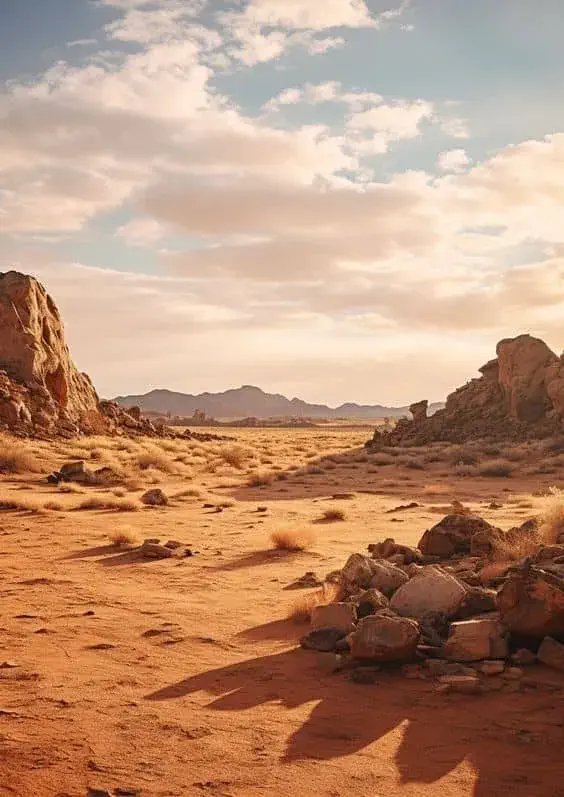
Join the exciting voyage across the planet encircled by the advent of arid territories and their enigma. Here the author discusses the mysterious areas of the world where there are the possibilities to find the signs of life in conditions that are extremely severe; the dunes’ move, and their stories tell about survival. Follow us to explore the largest and astonishing expanses, where horizon ignites with warm colored light and the air is filled with history. Welcome to a world where deserts offer the ways to live, to discover past and to enjoy unique beauty of the nature.
Table of Contents
Top 10 Deserts of the World
1. Antarctic Desert

The Antarctic desert occupies the largest area and covers approximately 14 million square kilometer. Butterfly is also called a cold desert as all the remaining climate indicators show very low amounts approximately 2 inches of snow per year. Located from 66 to 90 degrees north latitude, it has one of the lowest levels of humidity and mean winter temperature below -60c (-76F). But it moderates world climate by reflecting sunlight and holding about 60 percent of fresh water in the world.
2. Arctic Desert

This type of desert is surrounded the North Pole and is cold with very little precipitation, mostly in form of snow. It consists of moss and lichen and massive animals including the polar bear and Arctic fox. However, the Arctic is important for regulating the climate, as well as for reflecting the Sunshine and stabilising the average temperature on the Earth.
3. Sahara Desert

Sahara Desert is the largest hot desert globally, located in North African, taking about 9 million Kilometres square. Extremely hot during the day with temperatures over 50°C (122°F) and dropping to below freezing at night due to the desert like dunes. It has extreme climate, but it is inhabited by camels, foxes, snakes and it is cultural and historical important due to presence of ancient civilization.
4. Arabian Desert

The Arabian desert is extend throughout a large part of Arabia and includes parts of Saudi Arabia, Oman and Yemen. Some parts of this Desert can get extremely hot and depending how one measures temperatures, they could easily exceed 50 Degrees centigrade (122 Degrees Fahrenheit). It is home to the fauna of Arabian oryx, camels and sand gazelles and other species. It is a large biogeographical region that comprises rocky plateaus and large dunes.
5. Gobi Desert

Looking at the climatic differences there is information that Gobi Desert is cold in northern China and southern Mongolia. Some of the noticeable conditions, which are characteristic of the climate includes extremely low temperature in the winter: -40°C (-40°F) and extremely high temperature in summer: 50°C (122°F). It features and extensive plain, sand dunes and mountains and the wildlife covers the Bactrian camel, snow leopard and wild horses.
6. Kalahari Desert

The Kalahari Desert occupies most of southern Africa with parts of Botswana, Namibia, and south of Botswana and South Africa. It is not a true desert but a semi desert, sandy, savanna which receives occasional rainfall that is favorable to various animals such as lions, elephants and meerkats. The Kalahari is also occupied by the San people that have lived in the area for thousands of years surviving in such conditions.
7. Patagonian Desert

The Patagonian Desert is situated in Argentina and spread cross Chile and this makes it the largest desert in South America. The climate is cold, and winds are strong, and the amounts of rainfall are small; some of the wild animals include the guanaco, puma, and rheas. It contains the grasslands mostly the savannah; plateaus; and the arid lands such as the scrublands.
8. Great Victoria Desert

The Great Victoria Desert is to be found in Australia and it spans the areas of Western Australia and South Australia. It is the largest Desert in Australia and is composed of mammoth dunes, saltpans, and low rocky knobs. surrounding wildlife comprises of dingoes, camels and the rich collection of reptiles The Desert has been home to indigenous people for thousands of years.
9. Syrian Desert

Syrian Desert occupies some portion of the land of Syria, Jordan, Iraq, and Saudi Arabia. It is arid with limited rainfall bearing forests and very high temperatures. Desert is a land with mainly rocky area and small dunes, they have foxes, lizards, and gazelles’ animals in their natural habitat. It has also been and important commercial and cultural hub throughout history.
10. Chihuahuan Desert

The Chihuahuan desert is found in the South Western part of USA and northern Mexico. It is the largest desert covered in North America and experiences hot and semi arid temperatures sometimes. The Desert is dominated by mountain series, grassland, and different cacti; animals found here include the Mexican wolf, the Javelina, and several bird species.
You Might like
Comparison Chart
| Name | Area | Location | Type |
|---|---|---|---|
| 1. Antarctic Desert | 14 million km² (5.4 million sq miles) | Antarctica | Cold desert |
| 2. Arctic Desert | 13.9 million km² (5.4 million sq miles) | Arctic region (north of the Arctic Circle) | Cold desert |
| 3. Sahara Desert | 9.2 million km² (3.6 million sq miles) | Northern Africa (spanning multiple countries, including Algeria, Chad, Egypt, Libya, Mali, Mauritania, Morocco, Niger, Western Sahara, Sudan, and Tunisia) | Hot desert |
| 4. Arabian Desert | 2.3 million km² (0.9 million sq miles) | Arabian Peninsula (spanning countries such as Saudi Arabia, Oman, UAE, and Yemen) | Hot desert |
| 5. Gobi Desert | 1.3 million km² (0.5 million sq miles) | Northern China, Southern Mongolia | Cold desert |
| 6. Kalahari Desert | 930,000 km² (360,000 sq miles) | Southern Africa (Botswana, Namibia, South Africa) | Semi-arid desert |
| 7. Patagonian Desert | 673,000 km² (260,000 sq miles) | Argentina, Chile | Cold desert |
| 8. Great Victoria Desert | 647,000 km² (250,000 sq miles) | Australia (Western Australia and South Australia) | Hot desert |
| 9. Syrian Desert | 500,000 km² (193,000 sq miles) | Syria, Jordan, Iraq, Saudi Arabia | Hot desert |
| 10. Chihuahuan Desert | 450,000 km² (173,000 sq miles) | United States (southern New Mexico, Texas), Mexico (northern Chihuahua, Durango, Coahuila) | Hot desert |
Conclusion
Altogether, these deserts – Sahara, the Gobi, the Antarctic, and others – prove, that there can be diverse desert landscapes and conditions all over the world. All deserts are characterized by low humidity, a very small amount of precipitation per year but these deserts are different in many ways: the nature of their climate, location and the fauna and flora that exist in them. Beginning from the freezing cold of the Gobi and Arctic deserts, the hot sandy dunes of Sahara and Arabian deserts – these habitats host distinct species of wildlife and flora menials that lived in these conditions. In fact many deserts, while extremly unfriendly to human and most animal life, are vital to the Earth’s overall ecosystems and replete with histories and traditions. Knowledge of these deserts makes one to embrace the ability of life to survive in harsh conditions and so there is need to protect the vulnerable desert ecosystem.
FAQs
Why are deserts so dry?
That is why deserts are characterized by a deficiency of rainfall. They get less than 25 centimeters or 10 inches of precipitation per year, again as a result of geographical barriers such as mountains that will shut out humid air or because they are situated on a plateau in high-pressure systems which do not allow precipitation.
What animals live in the desert?
There are undoubtedly many different species of animals living in the deserts and they are much adjusted to those conditions, Some of the animals are camels, lizards, snakes, rats, nocturnal animals like foxes and kangaroo rats. Such features as those that are adopted in the process of conservation of water and temperature regulation are peculiar among these animals are above all special adaptations to help animals survive in extreme conditions.
Can plants survive in the desert?
Indeed, there are numerous types of those plants that have developed mechanisms to cope with this climate. Some of these plants include cacti, succulents and many desert shrubs: for instance, most of these plants have adaptations for water storage in stem or roots, and very long roots to access water deep down the ground and others have features like thick, waxy cuticle for minimum water loss.
Are all deserts hot?
No, not all deserts are hot. While desert is associated with scorching heat the world contains cold desert like Sahara, Gobi, and Arctic desert. These cold deserts receive heavy snow during winter and even though summers are hot, the night becomes extremely cold.
How do people survive in the desert?
Desert dwellers depend on small water availability, knowledge of the geographical features and haven that will shield them from hot and cold climatic conditions. It is thus seen that cultures living in deserts have learnt the use of strategies such as keeping off the sun by moving from place to another, wearing loose clothes that which covers most of the skin and using techniques for storing water.
